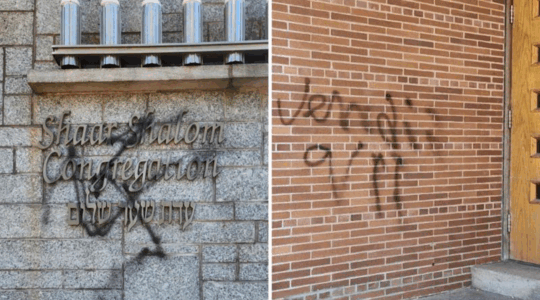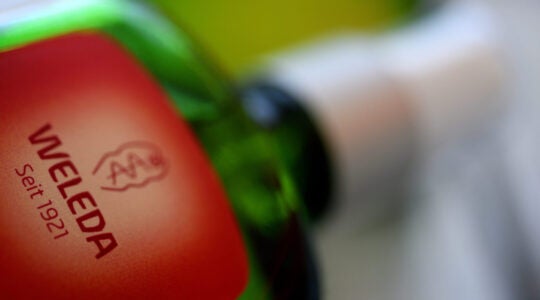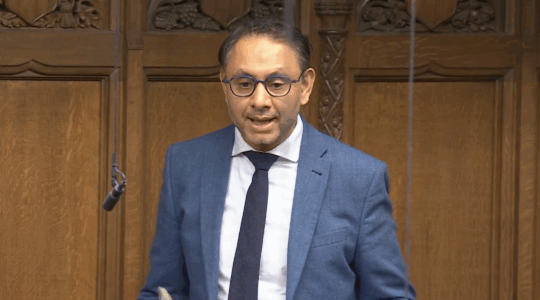
The exterior of the Danish Jewish Museum in downtown Copenhagen. Unfortunately, photos are not allowed inside. (Alex Weisler)
I thought my stop in Frankfurt was a quick hit, but my visit today to the Danish Jewish Museum was over in the blink of an eye.
I made the mistake of not researching the museum’s opening hours before heading into the city on a long layover en route from Reykjavik to Budapest. Just like Frankfurt, the Copenhagen city center is surprisingly close to the airport — just a 12-minute train ride.
What I should have done was hit the Jewish museum first and then take the boat tour of the city’s network of canals. But I reversed that, eating lunch, then opting to jet around for an hour or so on the water before finally walking over to the Jewish Museum.
To my horror, it was about 4:40 at this point — and the museum closed at 5.
Tickets weren’t cheap (really, nothing in Denmark is) but I decided I wanted to see this place. I’d heard rave reviews — about the facility’s striking architecture, courtesy of Daniel Libeskind; about its diversity of exhibits; and about how compact it managed to be without feeling small.
[[READMORE]]
Walking up to the museum, I was initially confused. They got Daniel Libeskind to design this charming, but nondescript brick building? It’s just like everything else in the neighborhood. Points for consistency, I guess, but…
Of course I was mistaken: Libeskind designed the museum’s interior, and it’s stunning.
Intricate without being overwhelming, the interior features long, sleek walls of pale wood, cut into different geometric shapes with occasional brightly illuminated zigzag slices carved out of them, like lightning.
I found it an intriguing metaphor for the average Jewish community, especially Copenhagen’s, which is a mixture of historic Jewish merchant families, Yiddish-speaking Eastern Europeans who came over in the first half of the 20th century and a more recent influx of Poles who fled persecution in the 1970s.
Yes, each sub-group has its own shape and tradition, but there are certain Jewish commonalities that cut through all that — and that’s where we find our light.
I could have spent two hours weaving my way through the exhibits, which cover everything from rituals and immigration to the Holocaust and community organizations.
But twenty minutes worked just fine, too. It’s that kind of place: quiet, simple and profound.
JTA has documented Jewish history in real-time for over a century. Keep our journalism strong by joining us in supporting independent, award-winning reporting.





